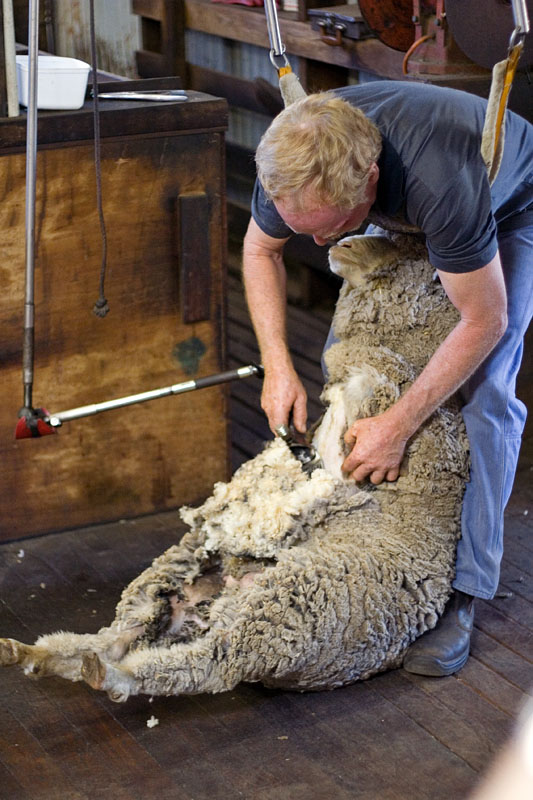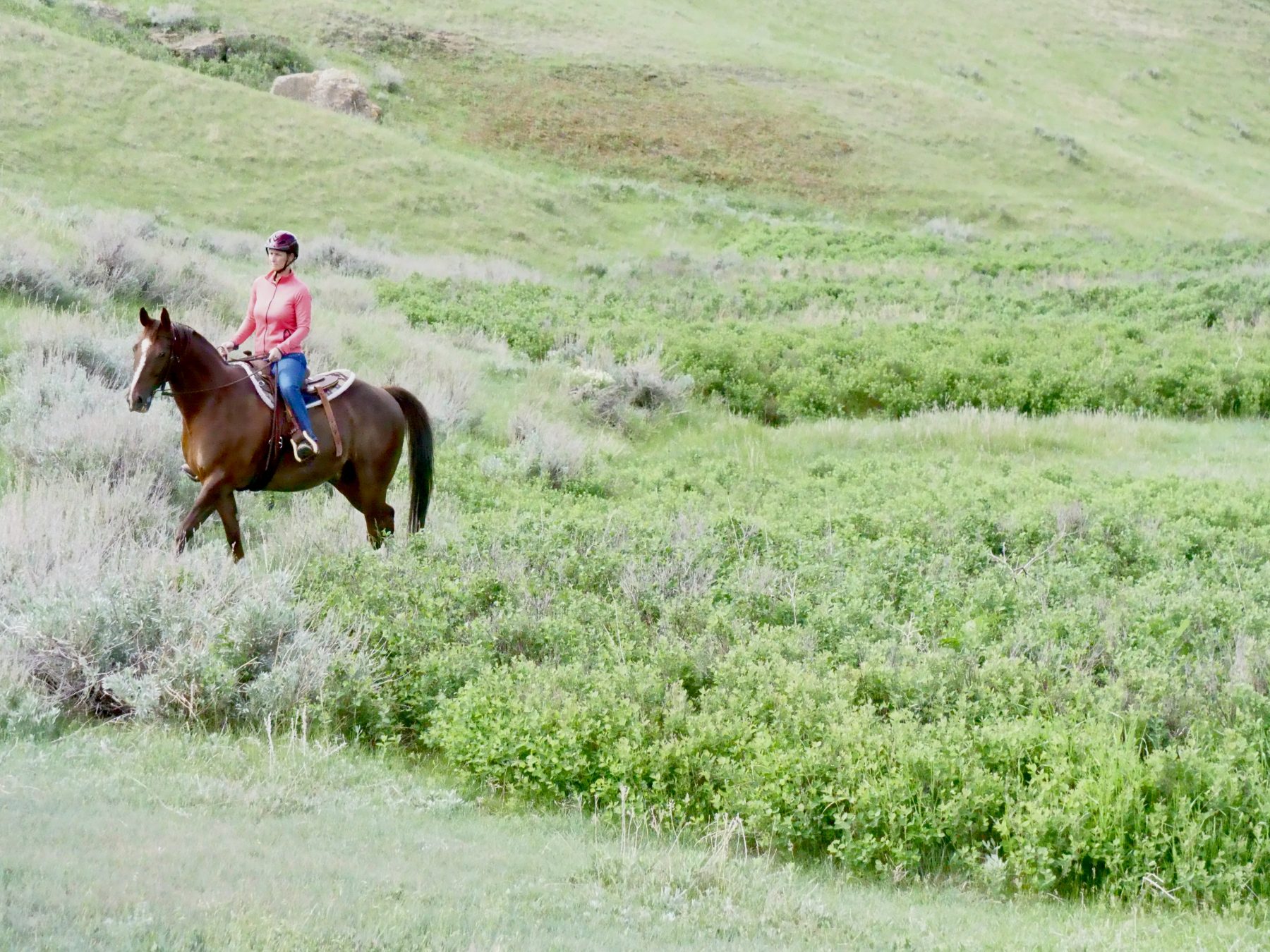by Harry Forbes

During the latter half of the 1920’s my mother had a few sheep, anything to make a dollar! If a ewe had twins or triplets, the sheep ranchers left only one lamb on the ewe; they would give the other lambs away. (This was during warm, dry weather. If there was wet snow or the weather was rainy or colder you daren’t go near; you stayed out of that old sheep man’s way.) By starting with those hand-fed orphan lambs, Mother later had a small flock of twenty-five sheep.
To start those lambs, you had to feed them milk with a bottle and nipple. At first just like a human baby, they had to be fed on schedule every four or five hours. Later a nipple was fastened into the bottom of a jam pail or such to teach them to drink without a nipple. At first they would use the nipple, but then they would ignore it. When they got so they were drinking well, the nipple was removed. They soon became pets and could be real little pests.
If you had ewes, you had to have a buck. Some of those tame bucks got pretty mean. They would back up, take a run at you, then just before they hit you they would rear up on their hind legs and hit you with their heads and their heads were hard! When two bucks would fight they would each back up until they were 50 or 60 feet apart, rear up on their hind legs, run straight at each other and hit each other head on. They must have terrible hard heads. Only once did I see a buck get his neck kinked. Did they get headaches?
We had a buck that got quite mean. He had broken down his slab fence pen and would tackle anyone. We had to keep him staked out on a picket line so he wouldn’t hurt someone. Dad dealt him to Watt Cameron who had lots of sheep and lots of room for him to roam so he wouldn’t bother anyone. We hauled him down to Watt’s place in a crate in a wagon. Dad let the buck out, then he and Watt stood beside the wagon visiting. Watt had hired a young Welshman. Also working there was Ernest Lorenzen, a Dane who had been around sheep quite a bit and knew how they acted. Ernest started teasing the buck. He made sure he was in line with the Welshman and just when the buck reared up to hit, Ernest stepped aside. The buck hit the Welshman and knocked him down. Ernest waited a while until things cooled down then started to tease the buck again. He lined himself up with the Welshman again. When the buck rose up to hit Ernest, he again stepped aside and the Welshman got knocked down. After that Ernest was not able to get near the Welshman.
I remember my dad, Allan Forbes, and Martin Wilson, Jim Wilson’s dad dealing on a buck in the late 1920’s. They were one dollar difference in price. Dad wanted eight dollars and Martin offered him seven. Finally one of them said, “What’s a dollar to you?” The other retorted, “What’s a dollar to you?” I don’t remember who won out on the deal.
I had a bad experience with a buck sheep. It was after we were married. Our neighbor who had sheep was picking up our buck. They had their truck backed up to the barn door and I was the herdsman, supposed to chase the buck into the truck. I had him just about to the truck when he turned and ducked between my legs. My legs were just short enough that I couldn’t reach the floor to get off. He gave me the wildest backwards ride that I’d ever had. The guys were about to burst out laughing but didn’t dare because they didn’t know what kind of mood I’d be in after my mutton bustin’ performance.
Shearing Sheep:
Sheep shearing at this time was the best paying job you could get, so I joined Donny Anderson and Bert Moore as a sheep shearing gang. I don’t remember what price we started at but we graduated to seven cents a sheep for shearing and tying the fleece. At 40 sheep a day that amounted to $2.80 a day for back-breaking work.
I started out at Watt Cameron’s to practice. He would show us how and it looked so easy to watch as he had sheared 100 sheep a day in his younger days, but when I tried to do it, it was a different story. I finally got up to 40 a day, Donny 40 to 50, but Bert was faster and could do 50 to 70 a day. It depended a lot on the type of sheep you were doing. The Marinos had wool right down to their toes and wrinkles; the Cheviots just had body wool and clean legs.
In the morning you counted out the number of strings you thought you would need to tie your fleeces for the day. That was how you kept track of how many sheep you sheared that day. One day Donny had taken 40 strings and used them up so counted out some more. That evening Watt and Donny got into an argument about how many sheep Donny sheared. Watt said 40, Donny said 50. Next day Donny counted out 40 strings. When they were used up, he sat up on the fence. When Watt came along, he asked Donny why he wasn’t shearing. Donny replied, “I used up my 40 strings, when I shear more than you, you just dock me.”
Harry Grant was a 100 sheep-a-day shearing man and his brother, Kenny, I think about 75. The faster you could shear, the easier it was on your back. You were only bent over for a few minutes, then up again.
This happened 70 years ago but I will try to explain to the best of my remembrance how we sheared a sheep. The sheep shears we used were the old style, scissor type; they had a spring type handle that opened the scissor blades. You closed them by squeezing the handles. This action was hard on the hands and wrists.

Shearing methods are a bit different using different types if shears. Our method was to sit the sheep up on its rump, stand behind the animal and hold the front legs up so the stomach was firm, shearing that area first. The reason for holding the stomach firm was that there are lots of blood vessels close to the surface there. If you cut one of those vessels the sheep could bleed to death, unless you sewed it up to stop the bleeding which you did with a needle and thread. Standing to the right side of the sheep and still holding upright, you sheared the opposite side of the face, most of the head and from the middle front around the whole side past the backbone. Changing position to the left side you sheared from the backbone around to where the work started. Now that you sheared your sheep and you could straighten up, stretch your back and flex the shearing hand.
You had to fold the fleece into a square bundle, pull a string around two different ways as tight as possible and tie it. The strings you used were those you counted out in the morning to keep track of how many sheep you sheared.
The fleeces were now tramped into large wool bags by trampers, some of whom could tramp 500 pounds into a bag. Some trampers had a technique of tramping more wool into a bag than others. There tended to be a bit of a competition between them.
